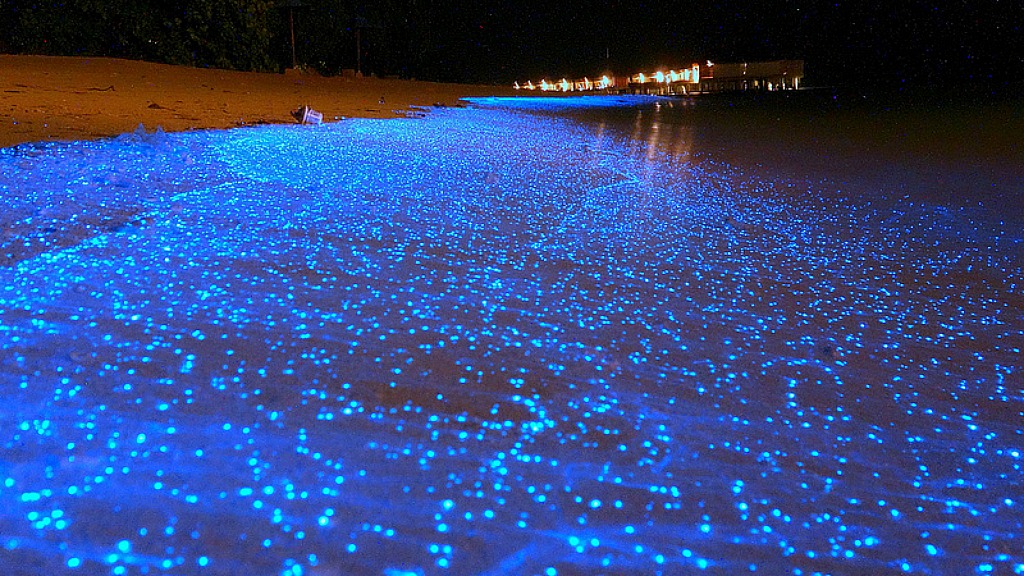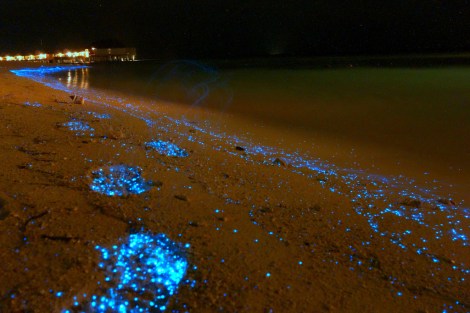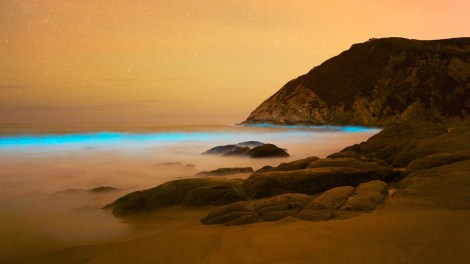Meet bioluminescent phytoplankton, the fireflies of the sea. When the li’l marine microbes get stressed out — say, by crashing waves or you rowing your boat over them — they glow in the dark. Bad for them, but good for anybody who appreciates an algae bloom of fluorescent Smurf dandruff!
Taiwanese photographer Will Ho took the above shots of bioluminescent phytoplankton while on vacation in the Maldives. Here’s another gorgeous one, taken in Pacifica, California, by San Francisco photographer Charles Leung:
Scientists are still working out how and why this magic blue ocean-starlight happens, but those slowpokes are making progress, according to NatGeo:
The most common type of marine bioluminescence is generated by phytoplankton known as dinoflagellates. A recent study co-authored by [Harvard biologist Woodland] Hastings has for the first time identified a special channel in the dinoflagellate cell membrane that responds to electrical signals — offering a potential mechanism for how the algae create their unique illumination.
Pretty gorgeous for something that can kill fish and wildlife!





